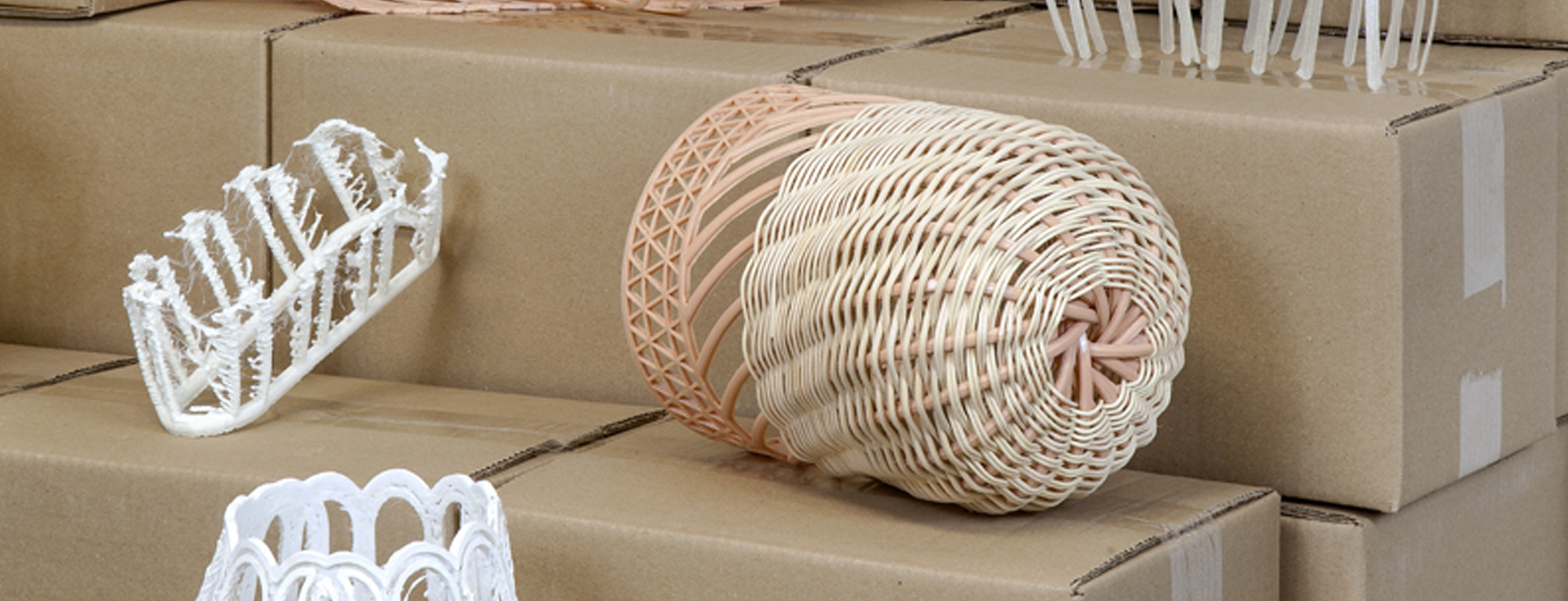
The project
Interaction between the basketry technique of hand coiling and 3D printing.
THE CHALLENGE
New technologies are sometimes perceived as threats to traditional crafts. Crossing Parallels aims to demonstrate that millennial techniques and new technologies are not opposites but can actually nourish and enhance each other. This hybrid collaboration invites us to reconsider the value of craft traditions in a contemporary context.
THE SOLUTION
The Crossing Parallels collection will be composed of baskets and containers. Partly handmade they will each bear a hybrid aesthetic telling about the encounter between basket weaving traditions and digital manufacturing.
Storytelling
THE IDEA:
The trigger that led me to initiate the project Crossing Parallels in collaboration with Esmé Hofman, basket weaving master, and Joris Van Tubergen, 3D printing artisan, is a similarity existing between coiling (a basketry technique) and 3D printing. The technique of coiling relies on the sensitive manipulation of materials by a human hand, 3D printing allows building tangible pieces from digital data. However, both techniques build objects through the same construction principle, laying one filament -whether natural fiber or melted plastic- on top of another.
My work explores the tension between traditional craft and new technologies, I saw in this construction similarity an opportunity to reveal the common points between traditional crafts and new manufacturing techniques and to question the definition of craftsmanship at large. Millennial crafts contain knowledges that are valuable to contribute to the evolution of our relations to new technologies, and to nourish/challenge/enrich the applications and aesthetics of digital manufacturing.

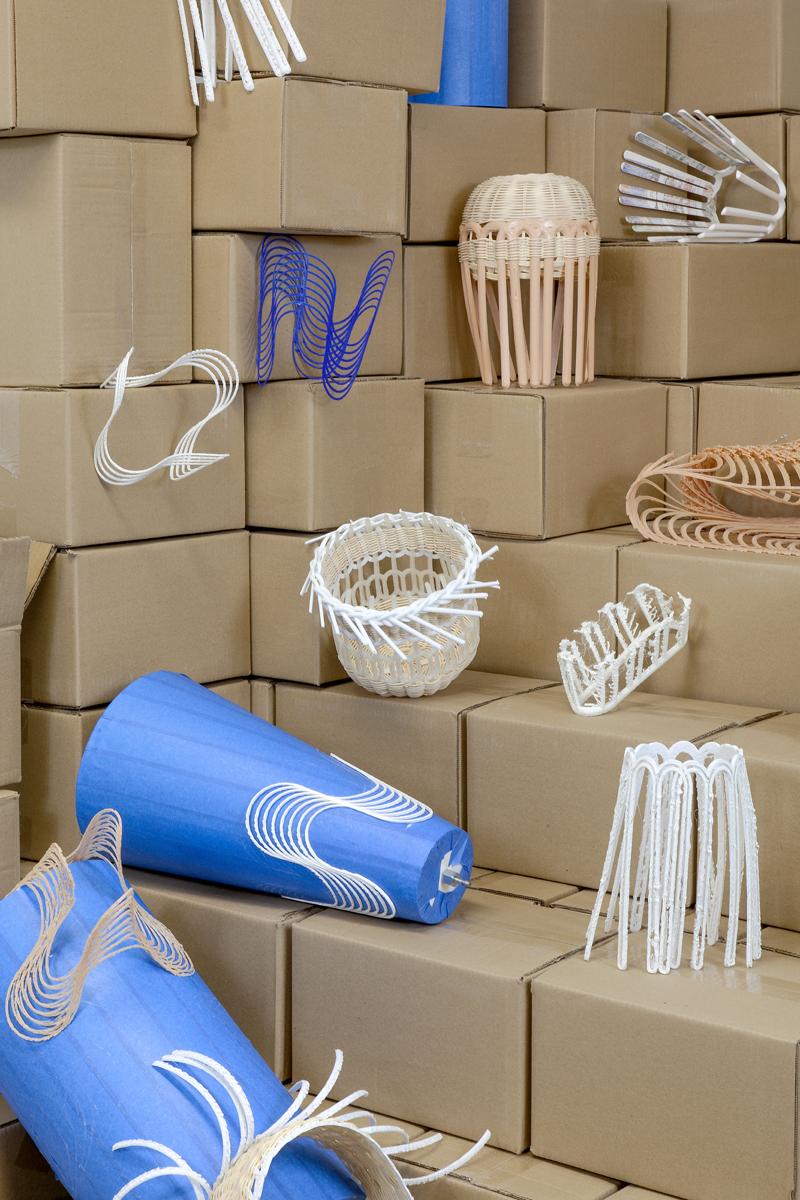
THE BIRTH OF THE PROJECT:
Crossing Parallels started when I met Esmé and Joris back in 2018. It felt right as we all appeared to share a mind-set: being interested in the process, in the technical challenges, and not wanting to make the same objects again and again. We started experimenting and building a material dialogue: between us, but also between basket making and 3D-printing. Through models, samples, tools, we raise questions, creative opportunities with the goal to create hybrid fabrication methods and aesthetics combining basket weaving and 3D printing.

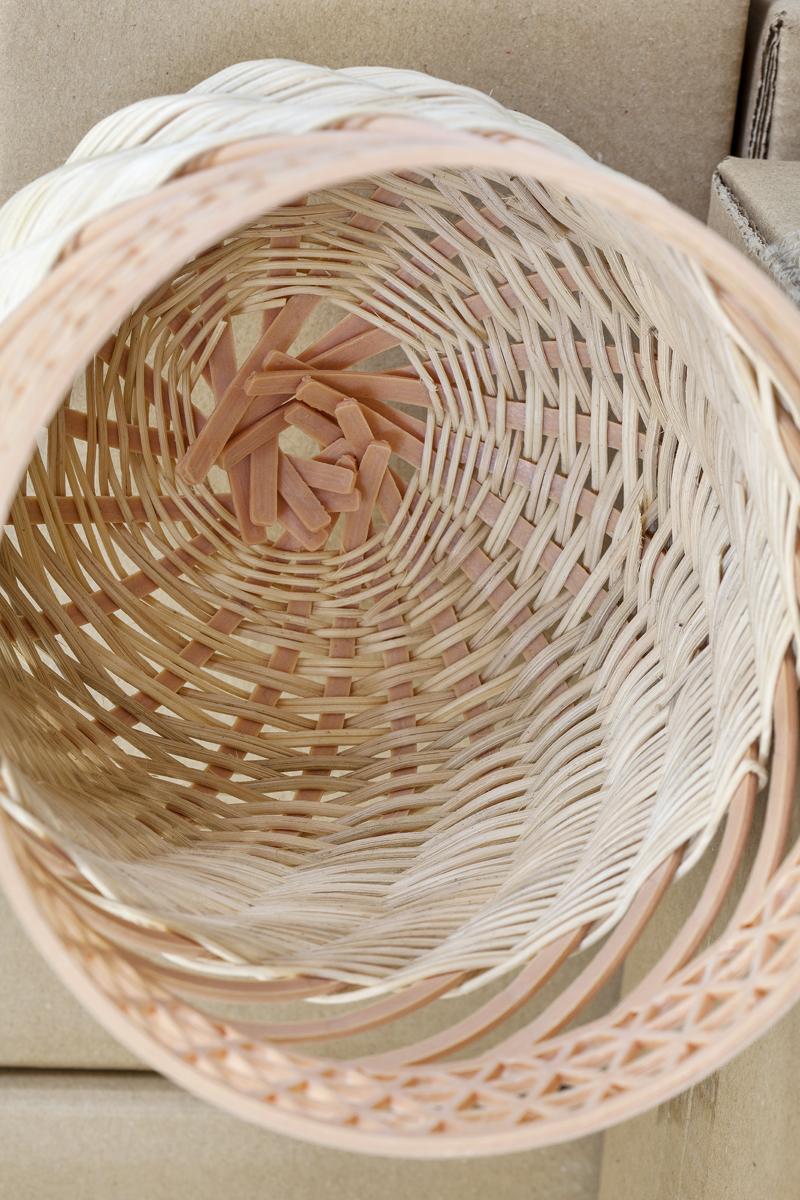
THE CREATIVE PROCESS:
Challenging the horizontal layering that is common to the coiling technique of basket weaving and 3d-printing led us to develop a rotary 3D printer. This tool became the heart of our cross-disciplinary collaboration. During the Worth Project, Joris conceived the second version of the rotary printer, allowing us to print more precise and bigger shapes. We used the rotary 3D printer to print flexible fibers, following my drawings. Those fibers are then shaped by Esmé using traditional basket weaving techniques.
The Crossing Parallels pieces aesthetic are marked by the creative decisions and gestures of the three of us.

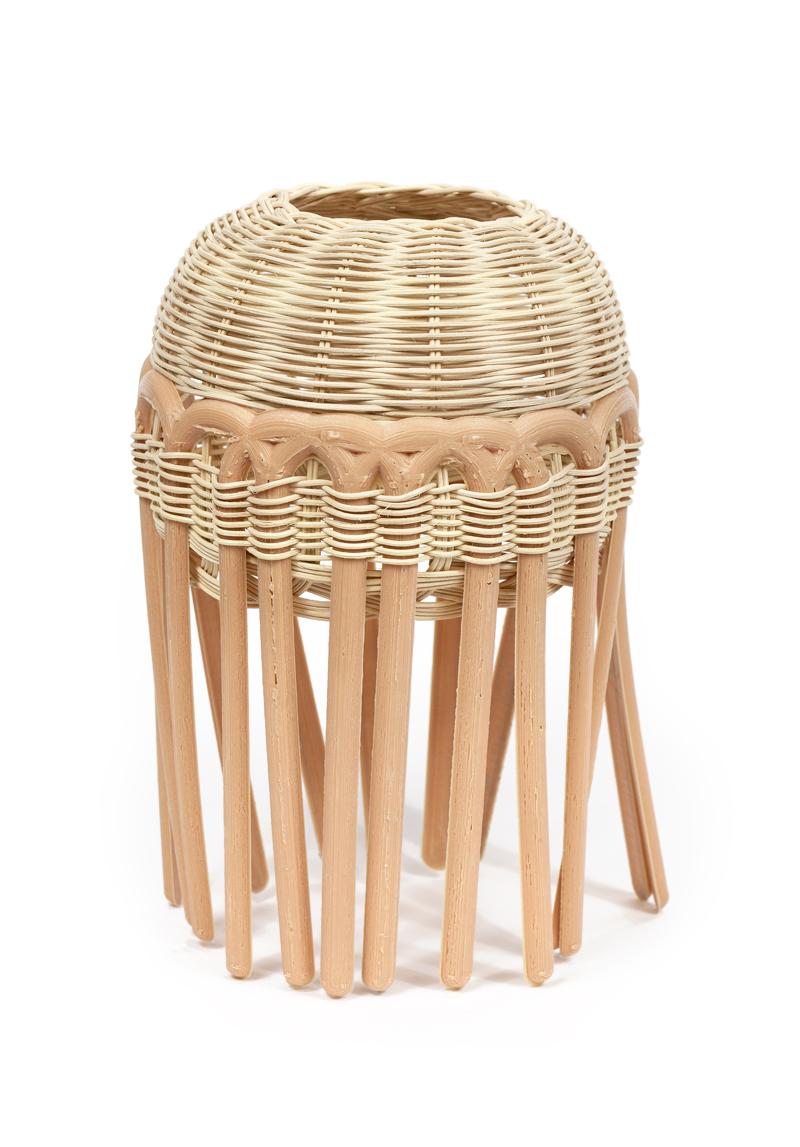
THE COLLABORATION:
During the development of the project, both Esme traditional knowledge of basket weaving, Joris expertise of 3D printing, and my work as a designer expand beyond the frontiers of their respective field to benefit each other. My goal as a designer is to make such dialogues possible, to be a mediator or coordinator for a multidisciplinary practice. By working with others, I aim to reveal common grounds to collaborative methods of producing, as well as aesthetics reflecting the evolution of crafts.
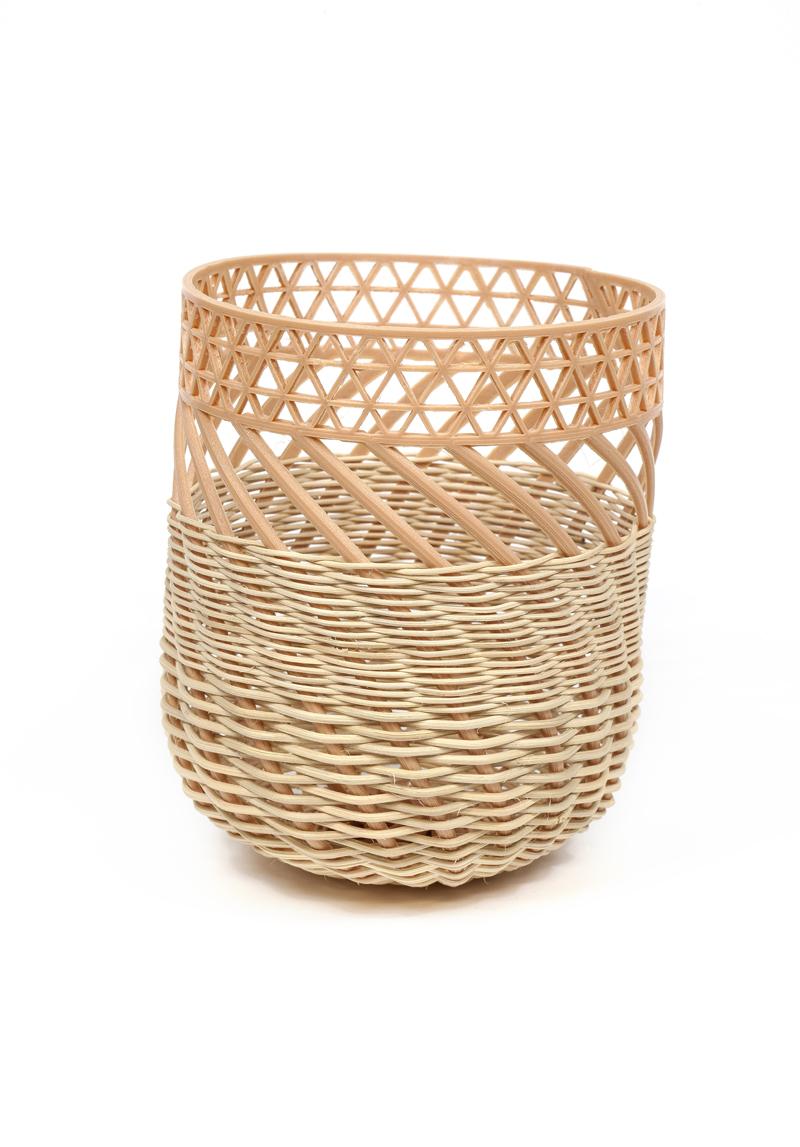
THE FUTURE:
During Worth project, we developed a first collection of pieces revealing the hybrid aesthetic of weaving from 3D printed flexible fibers. This collection will be followed by new chapters in our research process. Crossing Parallels will keep on expanding in a rhizome-like dynamic. Our ever-growing ecosystem made of tools, artefacts, methods, inventions, patterns,… generated new ideas, and new potential applications. Crossing Parallels also triggers methods for sharing and creating knowledge. In the end, our process reflects about human centered collaborations, how they can last and evolve together at the same time.
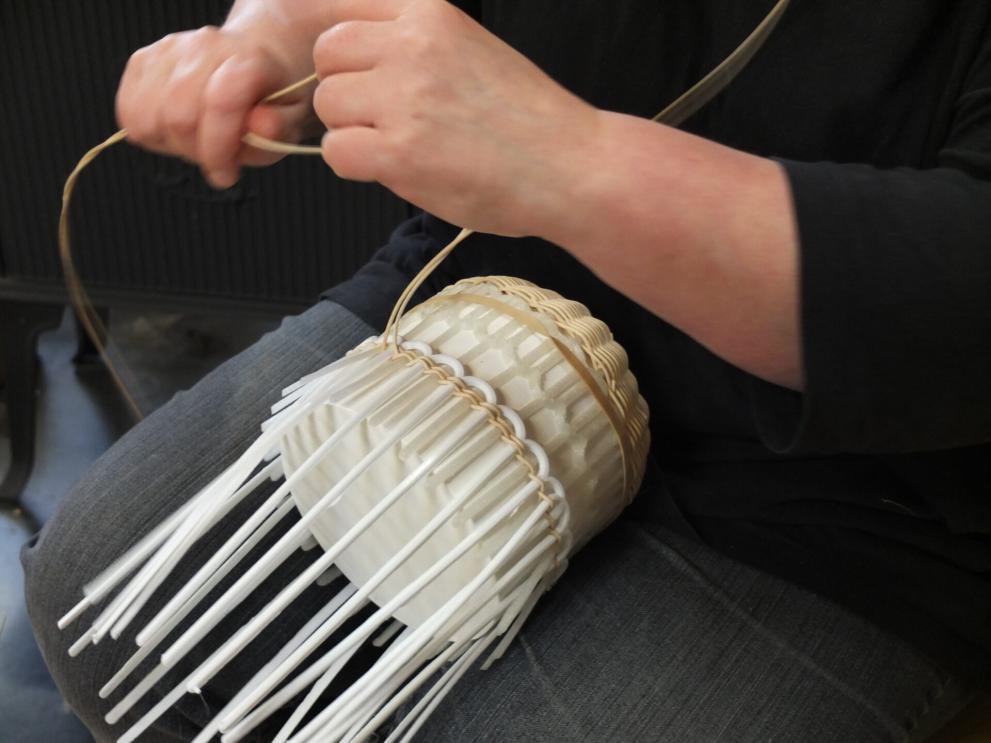
THE MESSAGE:
Traditional craftsmanship and digital manufacturing are not opposed, they can challenge and enhance each other. Multidisciplinary collaborations allow us to question our tools, their applications and their value for society.

- Project locations
- BelgiumNetherlands
- Projects Edition
- WORTH Partnership Projects I
- Project Call
- 3rd Call Projects
- Project Sector
- Furniture, home decoration, interior design and architecture
- Project Challenge
- Digital manufacturing
Contact
AMANDINE DAVID
Amandine David is a designer and researcher whose work celebrates knowledge sharing and multidisciplinary collaborations. At the crossroads between traditional crafts and digital practices, she develops hybrid tools and an original material research.
- Name
- AMANDINE DAVID
- Postal address
Belgium
- Social media
ESMÉ HOFMAN
Esmé Hofman is a basket weaving master working for designers, artists, museums, and any creative area. As a modern craftswoman, she looks beyond the borders of her craft knowledge to explore creative possibilities and generate new ways of making.
- Name
- ESMÉ HOFMAN
- Postal address
Netherlands
- Social media
JORIS VAN TUBERGEN
Joris van Tubergen is an inventor and expert in the field of 3D printing. His technical knowledge is used in several international projects and installations. His unique vision of the role of digital fabrication in society makes him a frequently requested speaker.
- Name
- JORIS VAN TUBERGEN
- Postal address
Netherlands
- Social media
